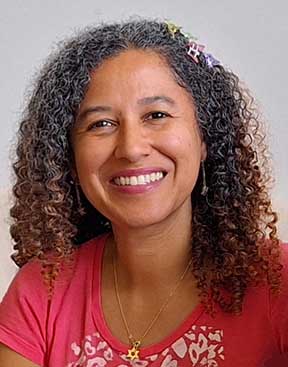FAIRIES revealing the Atmosphere-Space Electrodynamic Coupling
and LEONA Network
Eliah F. M. T. São Sabbas
Research Associate
PHaSER Partnership
The Catholic University of America
NASA Goddard Space Flight CenterSpace
National Institute of Space Research, INPE in Brazil
Wed, April 24, 2024 - 4:00 PM
 The first of the FAIRIES was discovered in 1989 in an unexpected way. Researchers at the University of Minnesota were testing a low-light level CCD camera for astronomical observations when they recorded light emissions in the sky above a thunderstorm approximately 250 km away, below the horizon. Later called Sprites, these phenomena are one of the types of atmospheric-spatial hybrid plasmas of short duration and low luminosity, the Transient Luminous Events (TLEs). Together with the High Energy Emissions from Thunderstorms (HEETs), which are hard radiation, they form the set of EFfects SignAlIng the ElectRodynamic CouplIng between the AtmospherE and Space (FAIRIES), which revealed the coupling of all atmospheric layers, neutral and ionized (ionosphere and magnetosphere), with each other and with the near-Earth region.
The first of the FAIRIES was discovered in 1989 in an unexpected way. Researchers at the University of Minnesota were testing a low-light level CCD camera for astronomical observations when they recorded light emissions in the sky above a thunderstorm approximately 250 km away, below the horizon. Later called Sprites, these phenomena are one of the types of atmospheric-spatial hybrid plasmas of short duration and low luminosity, the Transient Luminous Events (TLEs). Together with the High Energy Emissions from Thunderstorms (HEETs), which are hard radiation, they form the set of EFfects SignAlIng the ElectRodynamic CouplIng between the AtmospherE and Space (FAIRIES), which revealed the coupling of all atmospheric layers, neutral and ionized (ionosphere and magnetosphere), with each other and with the near-Earth region.
FAIRIES are the evidence that the Earth’s atmospheric system is not only coupled “top-down”, due to the solar wind and its energetic particles impact in the magnetosphere, which gets transferred to the ionosphere and then to the neutral atmosphere, but it is also electromagnetically coupled “bottom-up”. These recently known and still not fully understood phenomena are the newest component of space weather, still to be incorporated in the models. The most well-known TLEs are called sprites, halos, elves, blue jets, and giant jets. And the HEETs measured up to date are gamma-rays, x-rays, neutron beams, and electron-positron pairs. Thunderstorm and lighting electric fields, in a way that is not fully comprehended yet, form a natural particle accelerator in our planet's atmosphere capable of accelerating electrons to relativistic speeds giving, rise to emissions with energies comparable to the explosion of a star, i.e. a supernova.
This talk will give a brief review of the Earth-Space environment, including the structure of neutral and ionized atmospheric layers, atmospheric electricity concepts and the Global Atmospheric Electric Circuit, then it will focus on how this whole system is coupled electrodynamically by the FAIRIES and on the Transient Luminous Event and Thunderstorm High Energy Emission Network (LEONA) for FAIRIES research in South America, that is currently being expanded to North America. It will also present past results from ground field campaigns, some of the LEONA Network observations, including some preliminary results from the latest campaign in 2022, the LEONA and ILAN-ES Campaign to perform simultaneous ground-space observations together with the Israeli astronaut aboard the International Space Station, part of the Space Mission Imaging of Lightning And Nocturnal Emissions from Space (ILAN-ES).
Refreshments served at 3:45 PM
If you have any questions about the Colloquium Series or would like to make a donation please contact the Physics Department, cua-physics@cua.edu or (202) 319-5315.
